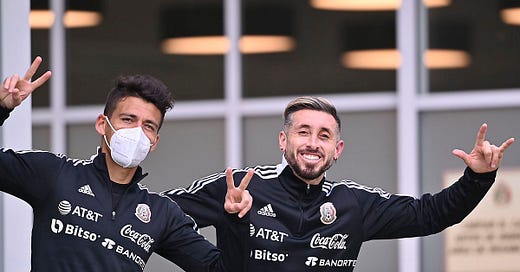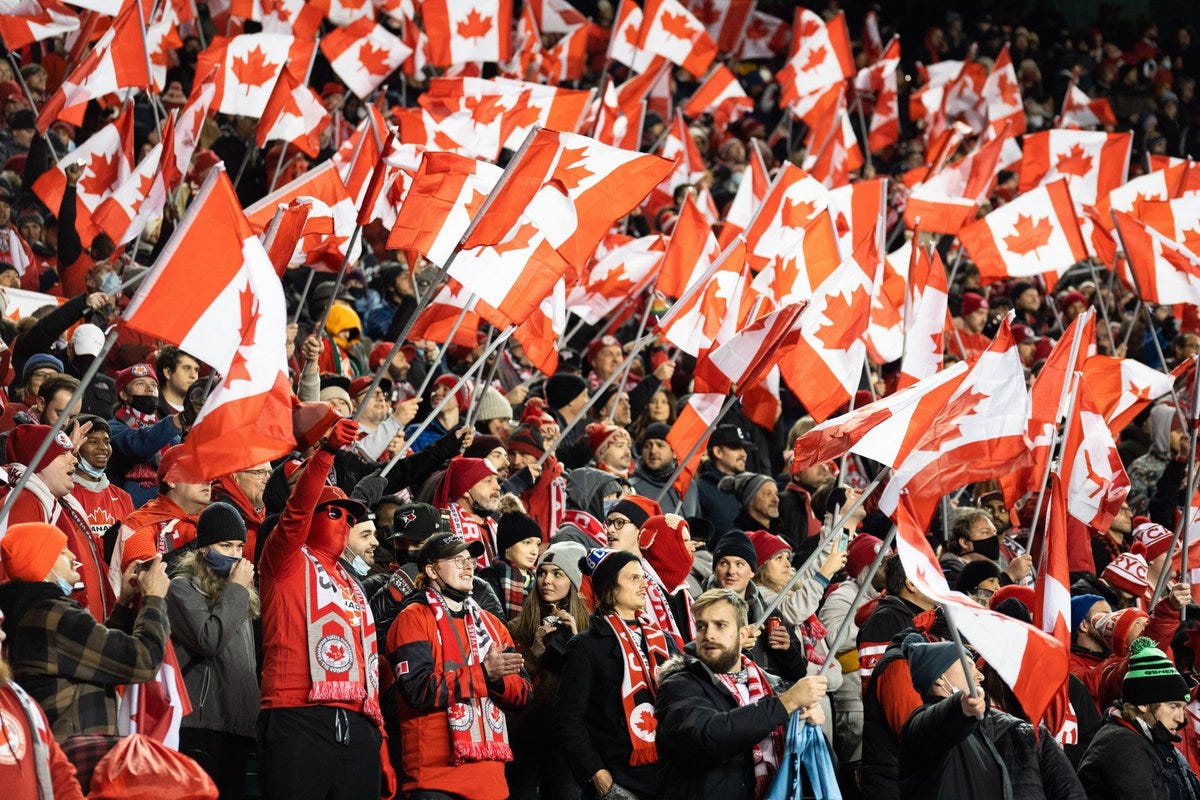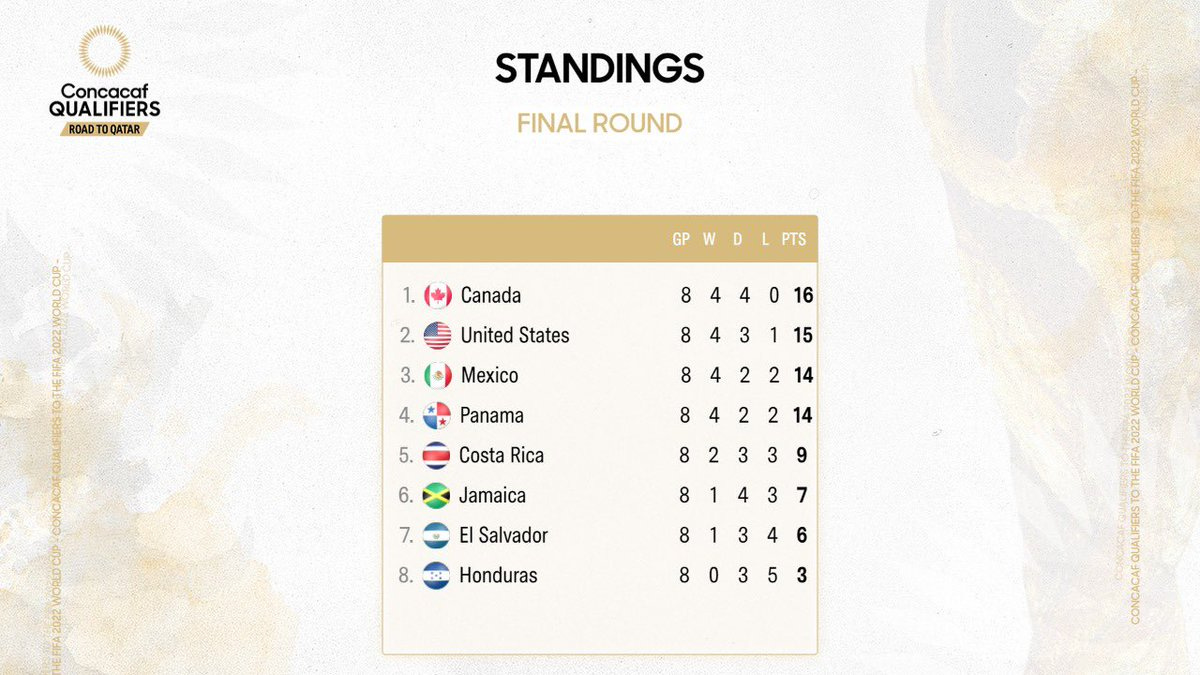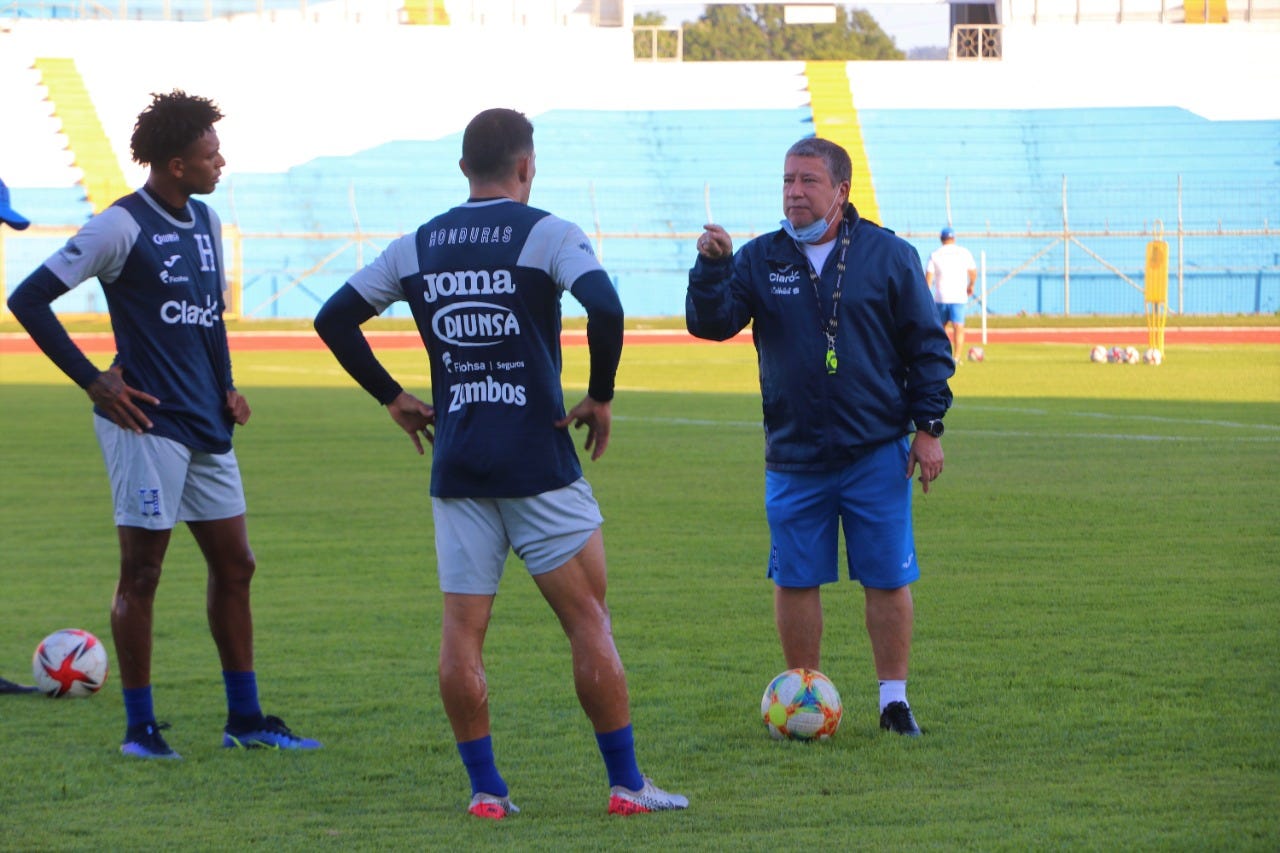🏆 Fight for fourth & last chance saloon: What to watch in the January WCQs
Also the ones in February. Weird window.
We somehow have come to the precipice of the penultimate set of matches in the final round of World Cup qualification in the Concacaf region.
With the schedule condensed because of the pandemic, we knew this would fly by, but even so it’s remarkable just how quickly we’ve reached this critical juncture.
While mathematically possible, it’s difficult to see any team clinching its place in Qatar prior to the final set of three matches in March. That said, it should be very clear even after Thursday’s matches which teams can start thinking about logistics for their trip and which may need to focus on 2026.
Here are five things to keep an eye on ahead of what really could be a trio of matchdays with enormous effects:
📅 Managing the window
The calendar presents some interesting challenges, especially for a pair of teams very much in contention for Qatar.
The first is Canada. The United States, which Canada hosts Sunday in the middle game of this three-match window, is clearly the strongest team they’ll face this week. Yet, they also are working to manage their first road trips to Central America, with a potential trap spot in Honduras opening the window and a return flight to El Salvador waiting after their home game.
The other is Panama, which sits comfortably in fourth and looks bound for the intercontinental playoff. Yet, the trip to Mexico is coming in the third matchday of this window, and the trip to the U.S. comes in March. Neither of those spots will be simple. That means finding some sort of result Thursday against Costa Rica and defending home turf against an upstart Jamaica team will be of utmost importance. Can Thomas Christiansen risk rotation and still hope to get seven points from this window?
In general, the North American teams have deeper rosters than El Salvador, Honduras, Jamaica and Panama.
That depth sometimes has shown. Look at the United States’ rollicking second half against Honduras after going down 1-0 in San Pedro Sula or Mexico scoring six of its 11 goals in the final half-hour of matches.
But that only works if managers make necessary changes. How Canada manager John Herdman and his U.S. counterpart Gregg Berhalther approach that middle game will be fascinating. It’s No. 1 vs. No. 2 right now, but it may not be strongest lineup vs. strongest lineup.
🥊 Is there a fight for fourth?
We’re going to find out. As noted above, it’s really in Panama’s hands. How well Concacaf’s third-place finisher in 2018 does in this window should dictate whether or not there’s any chance another team can jump into the playoff or if it’s Panama’s spot to lose.
Panama plays the team in fifth and the team in sixth to kick off the window and then plays the team right above it.
The good news if you’re rooting for Panama is the team has looked good, has its defensive core together with Harold Cummings and Andres Andrade fit in front of goalkeeper Luis Mejia and controls its own destiny after getting just as many wins as the North American teams in the top three.
The bad news is that Panama still hits the road four times, including twice this window. Cecilio Waterman is injured, so there could be some attacking depth issues, and your opponents are gunning for you.
For forward Gaby Torres, that actually puts Panama in a good position.
“They know what’s in play,” he said of Costa Rica. “They’re the ones in a tight spot. They’re the favorites, the team that has been to the World Cup more times, so we’ve got to take it on like that, calmly, trying to play the game we’ve been playing in qualification and get something positive there.”
The pressure certainly can be on Costa Rica, but a bad result Thursday could make the next two games all the more uncomfortable for Panama.
🏟️ Will the Azteca still intimidate?
Mexico is in Jamaica for the first match but then heads home to the Estadio Azteca for matches against Costa Rica and Panama.
The Court of Arbitration for Sport actually sided with the Mexican federation in its appeal against FIFA’s punishment for the homophobic goal kick shout, but FMF President Yon de Luisa opted to double down on efforts to get the word out of the game.
The two qualifiers at the Azteca will serve as test runs as Mexico implements a Fan ID system in which a QR code with personal data is scanned with each ticket and security guards are assigned specifically to remove people who are shouting problematic language from the game.
There will be only 2,000 fans at each game, meaning that while there will be some cheering and singing, Mexico’s home-field advantage will be a good 80,000 fans short of what it is at full glory.
Yet, what does that glory even entail these days? Mexico midfielder Hector Herrera questioned this week how good the atmosphere truly has been at the “Coloso de Santa Ursula.”
“In El Salvador, for example, the fans are always right there with the team, they have music and fireworks and everything so we don’t rest well, and you feel when you get to the stadium how the fans squeeze you from the start, not just when you go onto the field,” he said.
“On the field, they make you feel that you’re playing but you’re not welcome, you know?
“I, personally, feel like a lot of times we’re not like that with the teams playing against Mexico. The Estadio Azteca is very big and you can say, oh, it’s intimidating, and yes, it’s huge and very beautiful, but I don’t feel like the environment is so strong that the opponent says, ‘Wow, I’m scared shitless,’ to say it one way.”
Whether or not that’s the case when the U.S. visits in March is one thing, but we know it won’t be the case this time around. The fans are a critical part of the Azteca experience. So too was playing day games which sapped the opponents of energy or enjoying the advantage of playing at altitude. These windows, and the demands of broadcasters have taken those edges away.
Now, Mexico is left to depend on what should be a mark still in its favor: The talent production and history of the national team.
Mexico has the squad needed to easily qualify for Qatar, but it struggled in road matches against very good opposition in November.
In the Azteca, no matter what the atmosphere is like, El Tri need to be focused on the tasks at hand and not get distracted by anything off the field.
😵💫 Is this the end?
Honduras and El Salvador basically need nine-point windows here, and I don’t think it happens for either one.
For one, El Salvador’s absences are adding up ahead of a difficult-looking game in Columbus, Ohio against the U.S. Marvin Monterroza is out with Covid-19 (more below) and center-back pairing Eriq Zavaleta and Ronald Rodriguez may both miss the match, Zavaleta with a foot issue and Rodriguez because of travel issues. That’s a big blow for a squad that already was down a couple players because of similar issues.
“We’re taking the right steps,” El Salvador manager Hugo Perez told Futbol Americas this week. “Hopefully we continue to do that, but this coming Thursday we’ve got to be ready to go. For us, if we lose, depending on what other teams do in front of us, it’ll be hard to catch fourth place.”
Honduras is three points back from El Salvador and comes in on a five-match losing streak and an 11-match winless streak.
The team simply doesn’t seem to have the defense. Maynor Figueroa is anchoring a unit that otherwise is entirely domestic-based. Luis “Buba” Lopez is a strong goalkeeper, but it’s not clear Los Catrachos can keep shots from getting to him. Canada may struggle to adapt in their first trip to Central America, but getting results against Canada and the U.S. in the same window feel very far beyond the team’s abilities right now.
That said, there could be some interesting moments in both teams’ second game when they come together. Each squad will need three points and want a rivalry win.
😷 The present pandemic
This sucks.
Things felt like they were going in the right direction with crowd sizes increasing and fewer and fewer players testing positive and then omicron hit.
The first-hand effects on Concacaf WCQ include no supporters at Jamaica’s National Stadium, reduced capacity in Canada and, of course, players actually catching the virus and being unable to play in matches.
Reports of a large outbreak in the Panama squad seem to have been greatly exaggerated, with manager Thomas Christiansen among those who recovered and in Costa Rica ahead of the first match.
Mexico is without center back Cesar Montes in Jamaica after a positive test, though the player is reportedly asymptomatic and hoping to test negative after the first game.
Canada doesn’t have Alphonso Davies after his case of Covid and subsequent concern about myocarditis, and Stephen Eustáquio tested positive and is yet to join Canada in camp.
El Salvador, already down one player after a positive test in El Salvador, had Marvin Monterozza test positive Sunday and will be without one of its most experienced midfielders against the United States.
As we mention every time we talk about Covid, clearly the virus has affected things far more serious than which teams fro North America, Central America and the Caribbean go to the FIFA World Cup.
Still, it’s going to be a narrative this window. It’s naive to think teams won’t have more positive tests or run into other virus-related difficulties.










Great read. And I appreciate your appearances on Scuffed, very informative.